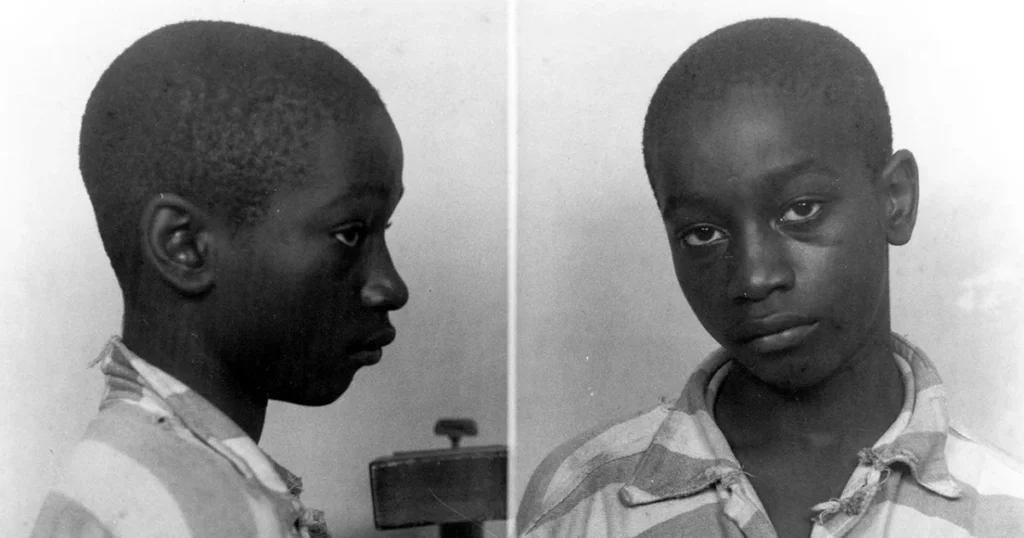
In the annals of American judicial history, few cases resonate with as much sorrow and outrage as that of George Stinney Jr., a 14-year-old African American boy executed in South Carolina in 1944. Stinney’s case not only underscores the racial injustices of the Jim Crow South but also highlights the profound failures of the legal system at the time.
The Incident and Arrest
On March 23, 1944, in the small town of Alcolu, South Carolina, two young white girls, Betty June Binnicker, 11, and Mary Emma Thames, 7, were found brutally murdered. The community was quick to point fingers, and suspicion fell on George Stinney Jr., a young African American boy who had reportedly spoken to the girls earlier that day.
The police arrested George the following day, claiming he confessed to the crime. However, this confession was allegedly coerced, with no written or signed record, and George was interrogated without his parents or an attorney present. The lack of physical evidence linking him to the crime was glaring, yet the racial tensions of the time overshadowed any semblance of due process.
The Trial and Execution
The trial that ensued was a travesty of justice. Held in a segregated courthouse where African Americans were barred from entering, George was represented by a court-appointed attorney who did little to defend him. The all-white jury deliberated for just 10 minutes before returning a guilty verdict. On June 16, 1944, George Stinney Jr., at the age of 14, was executed by electric chair, becoming the youngest person in the 20th century to receive capital punishment in the United States.
The execution itself was a harrowing spectacle. George was so small that the electric chair’s straps did not fit him properly, and he had to sit on a book to reach the necessary height. The mask placed over his face slipped during the execution, revealing his tears to the witnesses, a poignant image of innocence lost.
The Aftermath and Exoneration
For decades, George Stinney’s story remained a footnote in the dark chapters of American legal history, known only to a few. However, in 2014, a significant legal victory was achieved when a South Carolina judge vacated Stinney’s conviction. This ruling came after new evidence, including testimonies from George’s siblings, who claimed he was with them at the time of the murders, was presented. The judge ruled that Stinney was denied due process, his confession was coerced, and his defense was woefully inadequate.
Legacy and Reflection
The case of George Stinney Jr. serves as a stark reminder of the racial injustices that plagued the American justice system. His execution was not just a miscarriage of justice but a profound moral failing. The exoneration, though posthumous, brings some measure of peace to his memory, acknowledging the wrongful conviction and execution of a child.
Today, George Stinney’s story is taught in classrooms, discussed in legal circles, and remembered in communities as a call for vigilance against injustice. It underscores the need for reforms in the juvenile justice system, the abolition of the death penalty for minors, and a deeper understanding of how racial biases can skew the scales of justice.
The tragic tale of George Stinney Jr. remains a poignant narrative of innocence lost, a testament to the enduring fight for justice, and a reminder of the human cost of systemic racism. His story, while rooted in the past, continues to resonate, urging society to never forget and to always strive for a more just future.
Leave a Reply